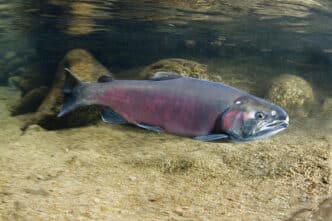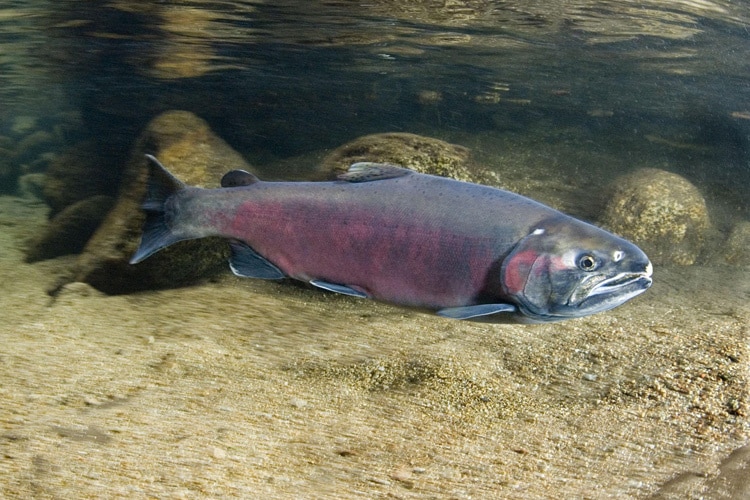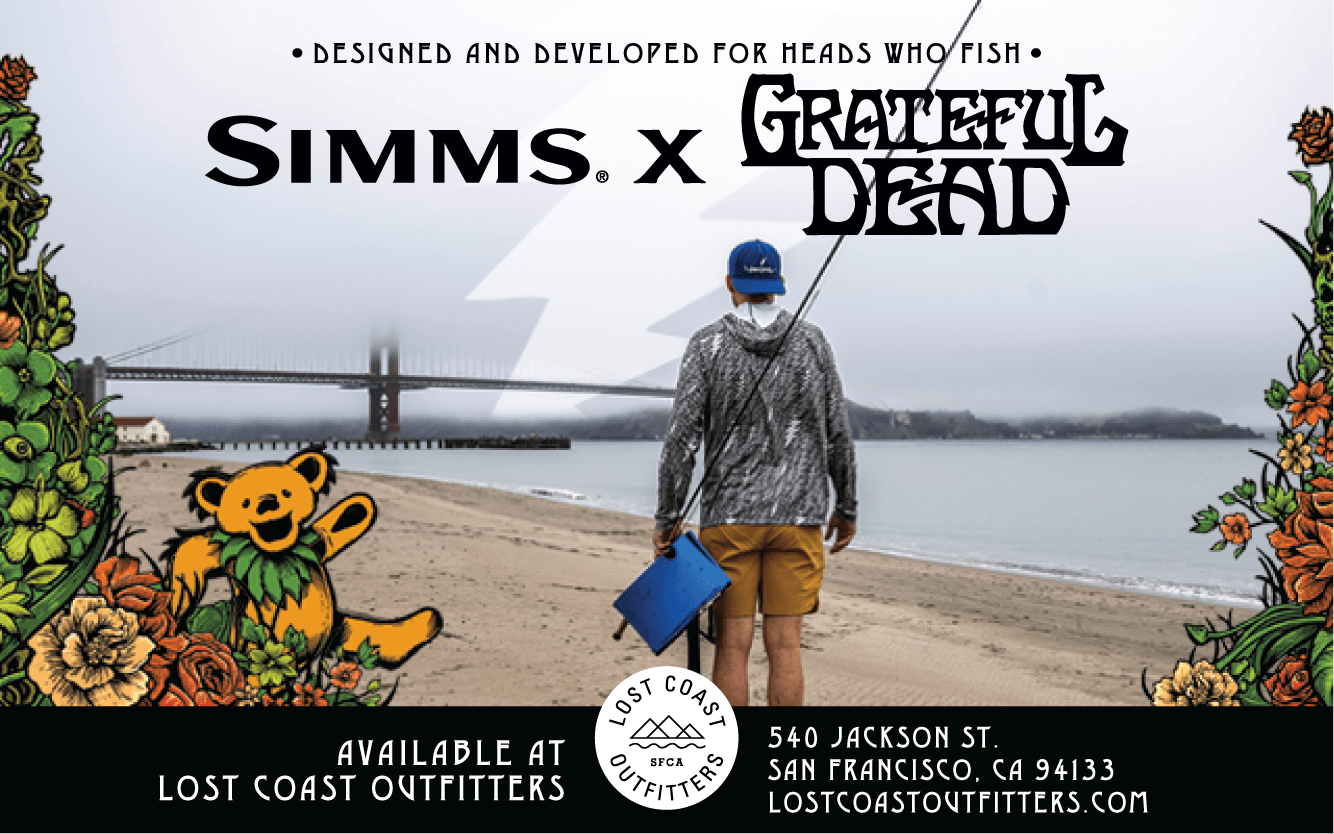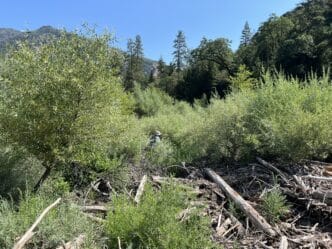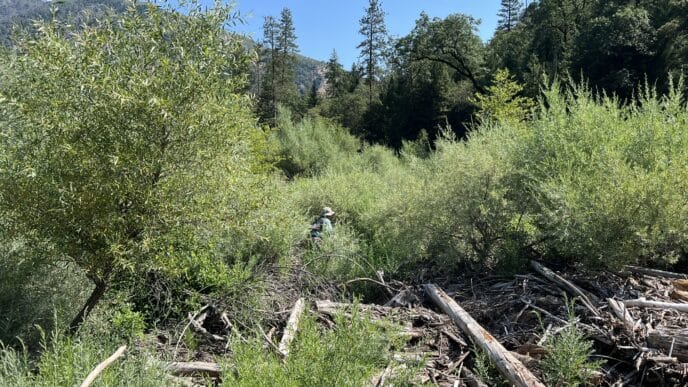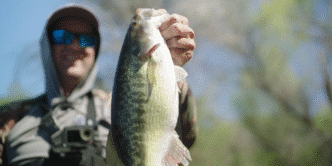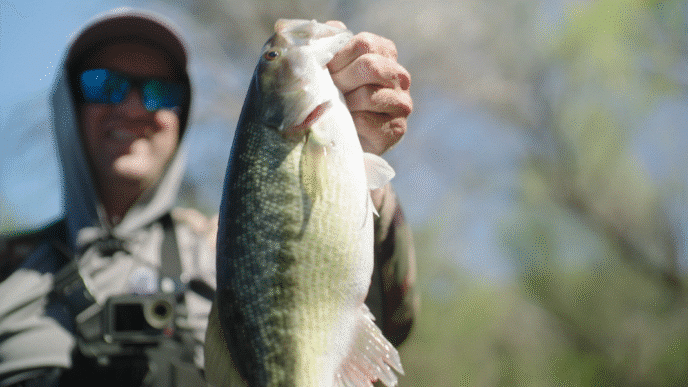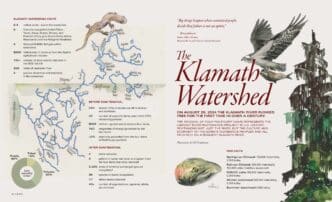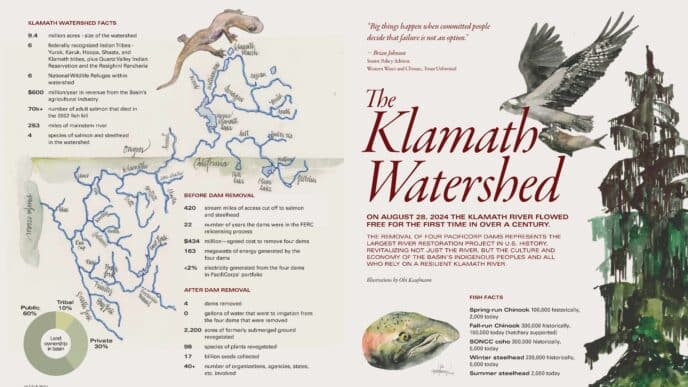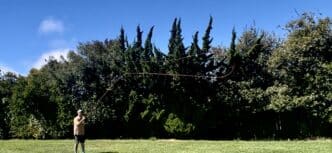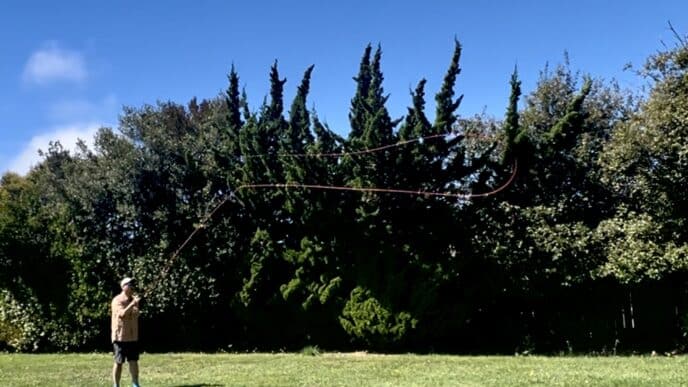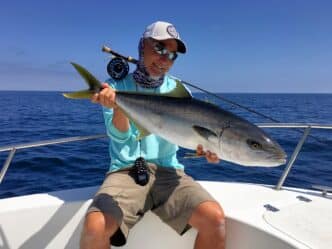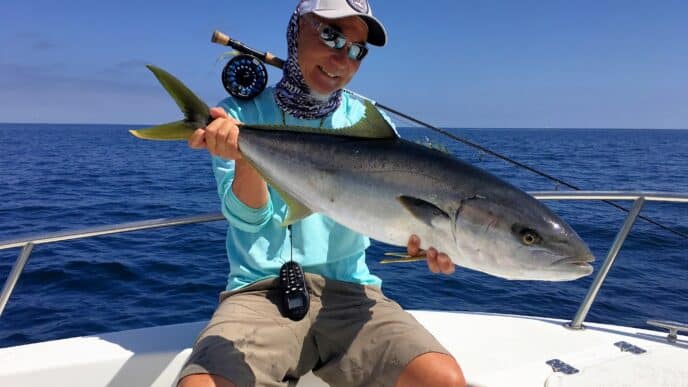By the time Central California Coast coho salmon (CCC coho) were listed under the Endangered Species Act (ESA) in 1996, they had virtually disappeared from the coastal watersheds that historically produced hundreds of thousands of salmon. The ecological and cultural loss of these fish is staggering. The fish had sustained the region’s native people for centuries, and the marine nutrients delivered by salmon bodies had grown the coast’s famously massive redwood forests.
Since the arrival of Europeans, the keystone species had been done in by the usual suspects: Too many were harvested for too long, and their habitat had been disconnected and degraded by extensive road building, logging, dams, and other changes to the landscape. Warming water temperatures and summer droughts driven by climate change add to the impacts.
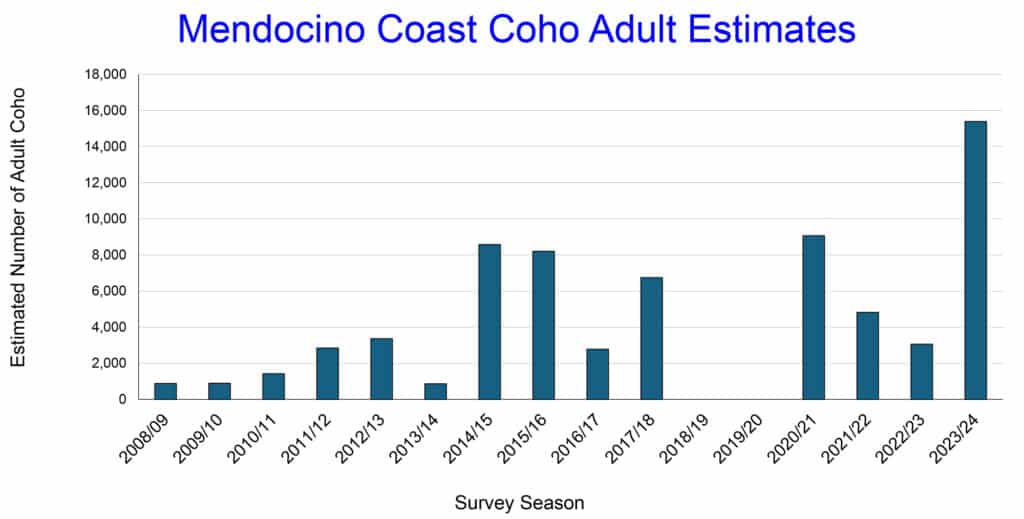
But after the winter 2024 season, the community of advocates and conservationists working to restore these endangered fish had a reason to celebrate. On the Mendocino coast, population monitoring done by staff at the California Department of Fish and Wildlife (CDFW) confirmed the Noyo and Ten Mile Rivers exceeded federal ESA recovery targets, and the Garcia and Big Rivers saw record salmon returns.
CCC coho still have a long way to go towards sustainable recovery and removal from the ESA list, but the improved numbers are a welcome sign that progress is being made.
TEAMWORK MAKES THE STREAM WORK
Many factors influence salmon returns year-to-year. For CCC coho, recent good ocean conditions meant there was enough food for smolts to survive and grow into adults. On the freshwater side of things, a couple of especially good water years meant that rivers had adequate flows for juvenile salmon rearing.
Years of protection and resources guided by the ESA have helped steer recovery efforts. And a broad network of private, nonprofit, state, and federal partners, supported by extensive investments in habitat restoration, have spent years rebuilding the spawning and rearing habitat salmon (and steelhead and lamprey, for that matter) need to recover and sustain their populations.
For 27 years, Trout Unlimited’s North Coast Coho Project (NCCP) has been working to restore and reconnect habitat and improve water quality in watersheds between San Francisco and the Klamath Basin.
During that time, the NCCP has initiated over 180 restoration projects. The program has removed 15 fish migration barriers, opening access to approximately 76 miles of spawning and rearing habitat; installed over 9,300 pieces of large wood across 146 stream miles; reconnected floodplain habitat by creating freshwater and estuary alcoves, critical rearing and shelter habitat for juvenile coho; and upgraded or decommissioned over 575 miles of roads, preventing over 727,800 cubic yards of sediment from entering streams.
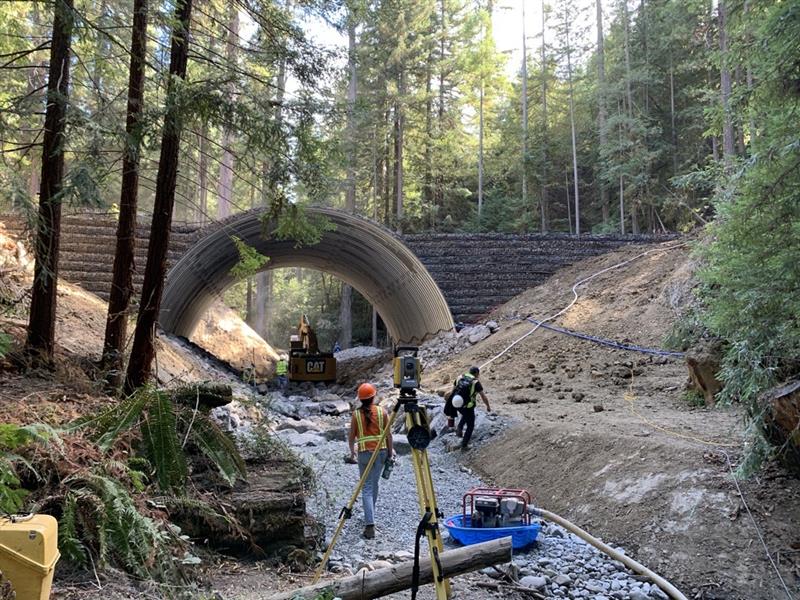
The tally of work is impressive, but the NCCP team would be the first to remind us that it doesn’t happen alone. Their mantra has always been “teamwork makes the stream work.”
It is a catchy phrase, but it is based on years of on-the-ground collaboration with partners at private timber companies and state forests, agencies like the CDFW and the NOAA Restoration Center, regional Tribes, resource conservation districts, and nonprofit partners like CalTrout, the Nature Conservancy, and the Trust for Public Land.
The work also depends on an army of foresters, heavy equipment operators, engineers, and seasonal labor. Beyond the benefits to salmon and steelhead populations and water quality, stream restoration supports hundreds of good jobs up and down the coast.
Far from slowing down, the encouraging number of CCC coho that returned during the 2023/24 winter only inspires the NCCP and their partners to work harder. Seeing salmon spawning in reconnected historical habitat or juvenile fish sheltering in a restored log jam are critical signs of progress. Still, everyone involved in the effort to rebuild CCC coho populations is deeply committed to their long-term success. The data on returns for the 2024/25 season should be in soon, and fingers are crossed that the positive trend continues.
Through federal habitat investments and leading science, the NOAA Restoration Center is a key driver of salmon recovery on the California North Coast.
If you’re interested in learning more about the strong coho returns on Mendocino coastal rivers, the work underway to recover populations, and the restoration economy making the work possible, be sure to check out this pair of great articles recently published by NOAA:
Endangered California Coho Salmon Experience Record-Breaking Spawning Season on Mendocino Coast
Endangered Salmon Move into Newly Restored Habitat on the Mendocino Coast
In the meantime, keep up with TU’s work in California by following their California social media channels on Instagram and Facebook.



